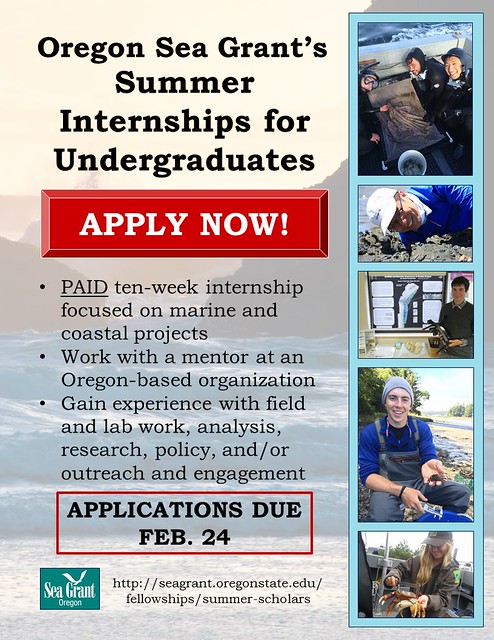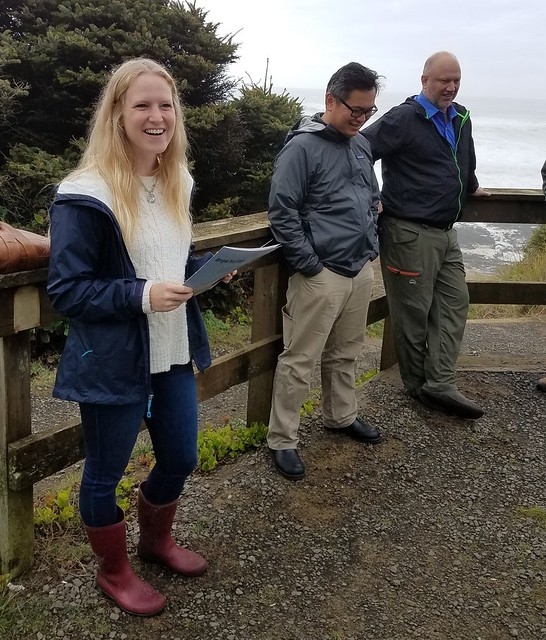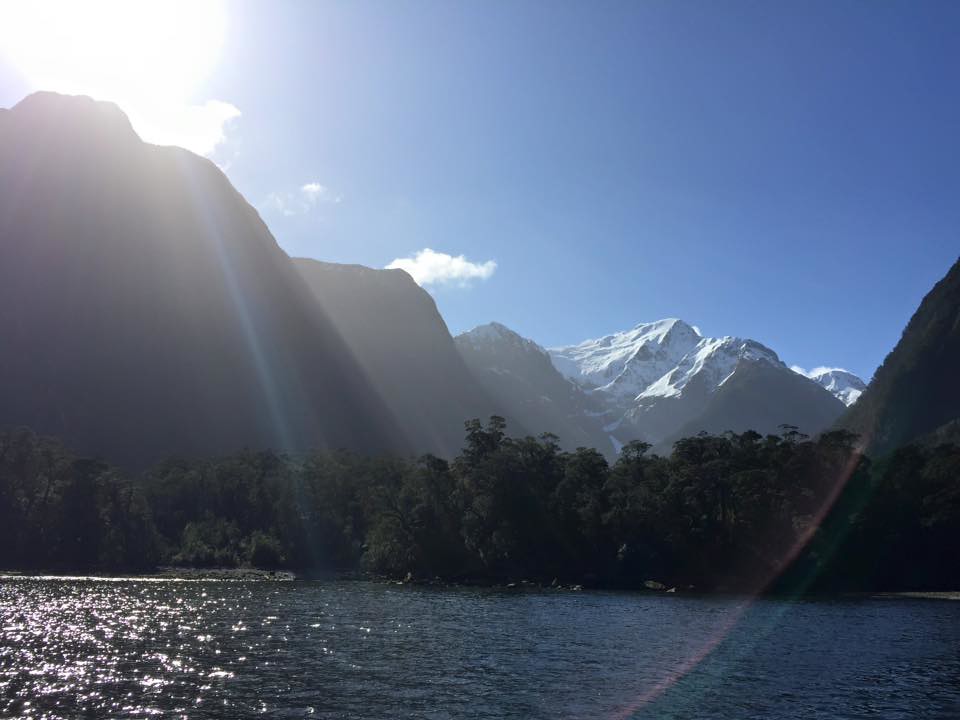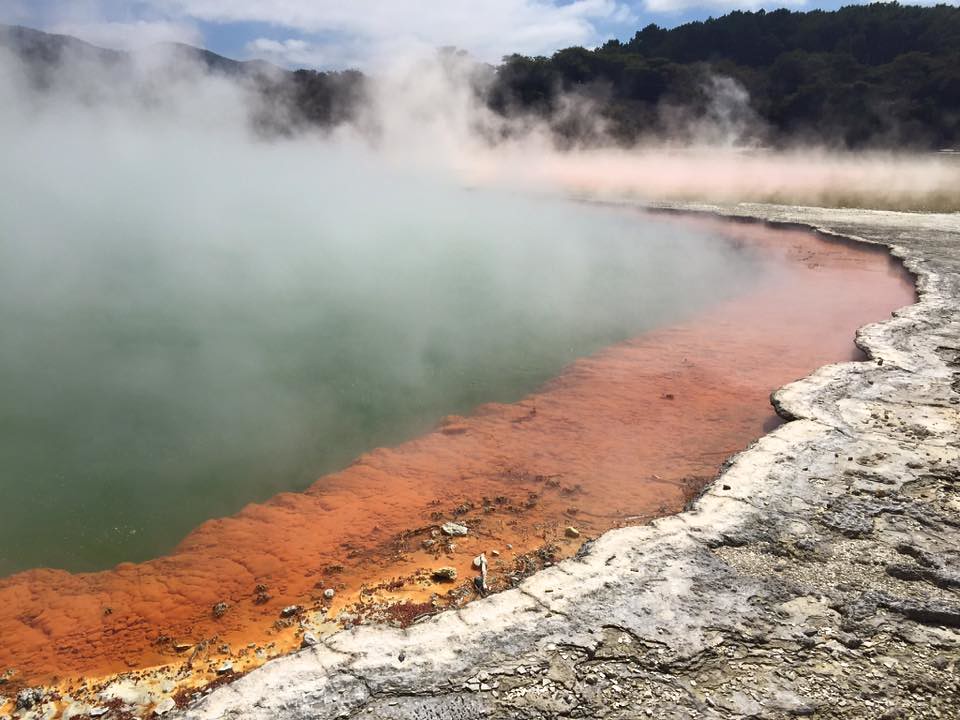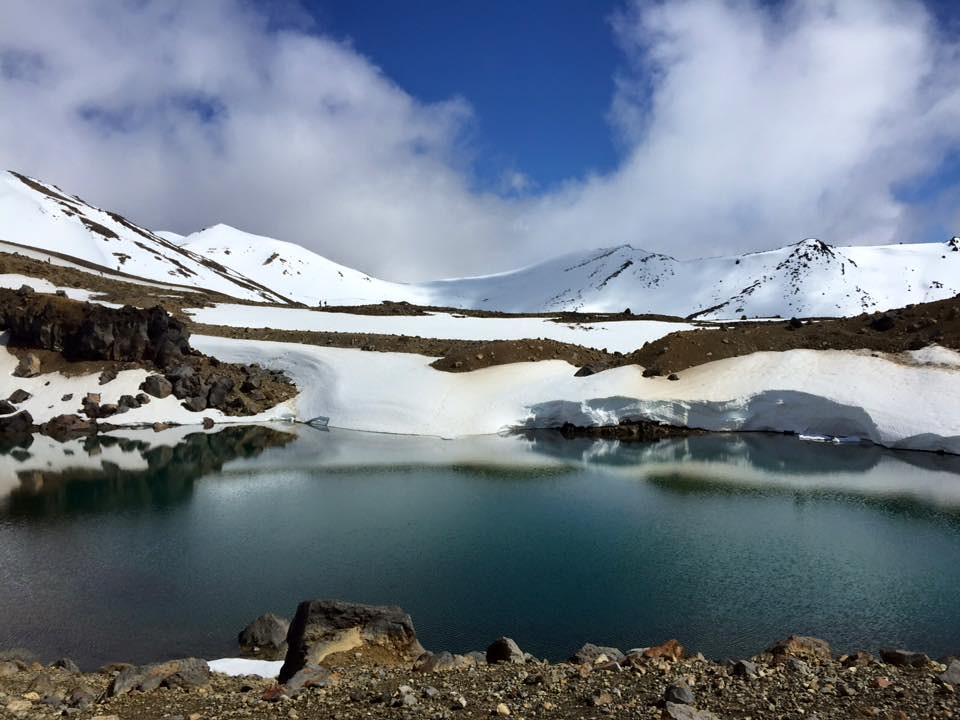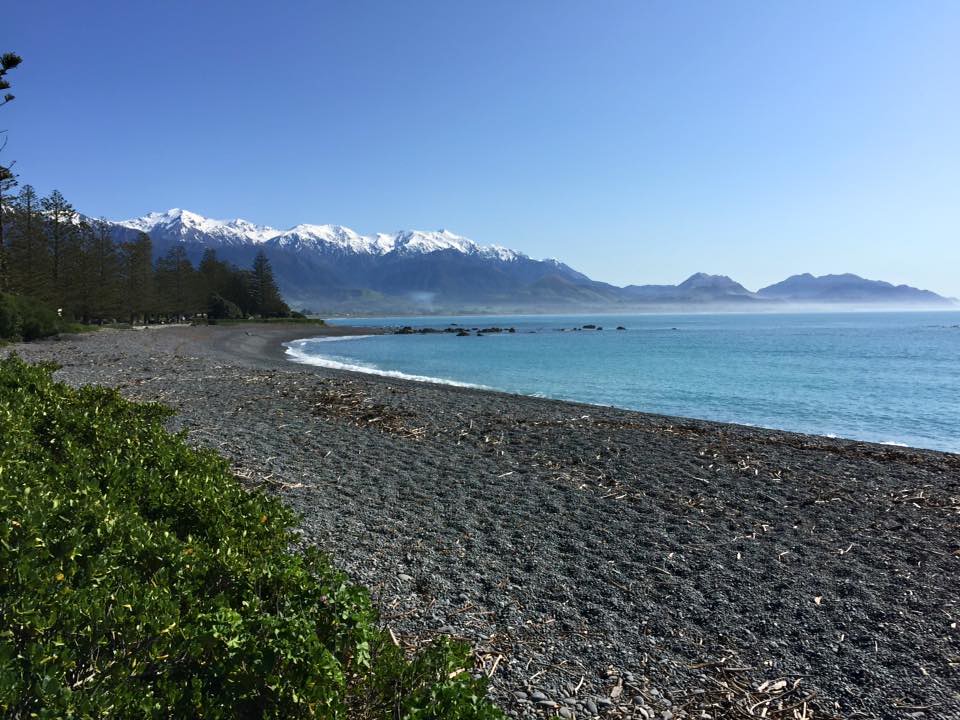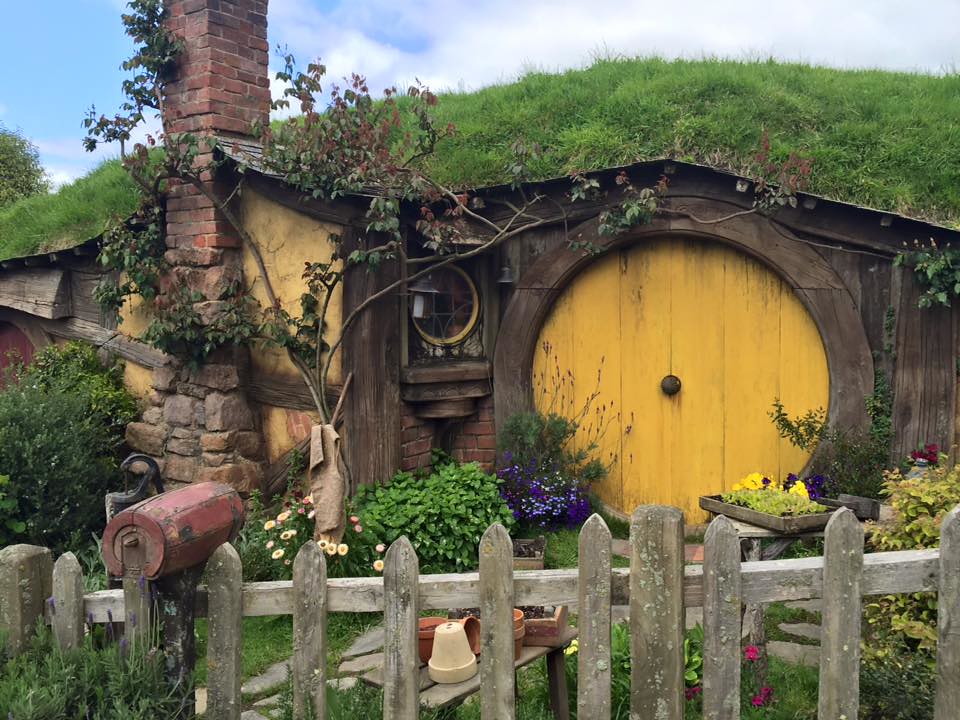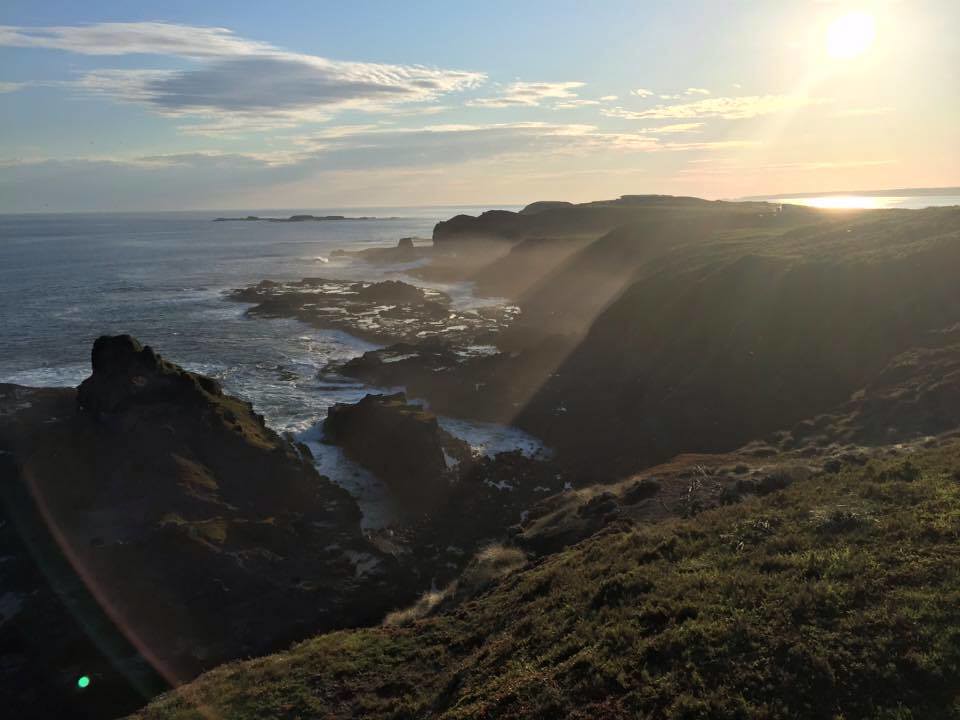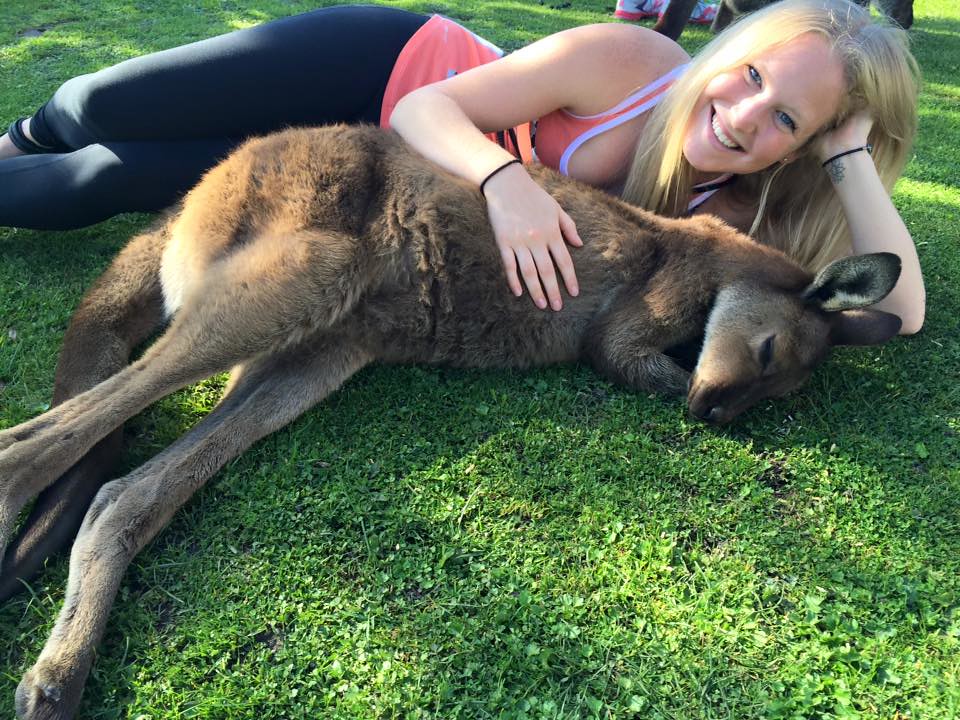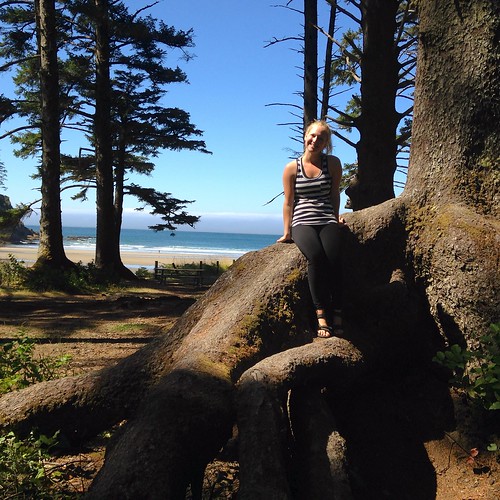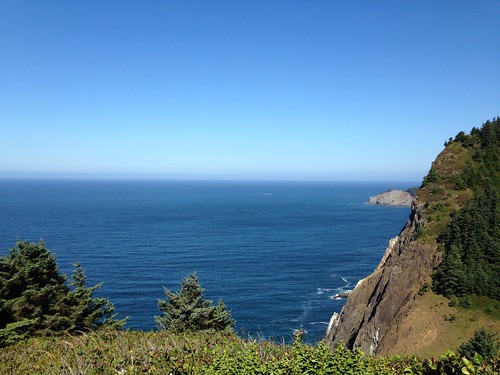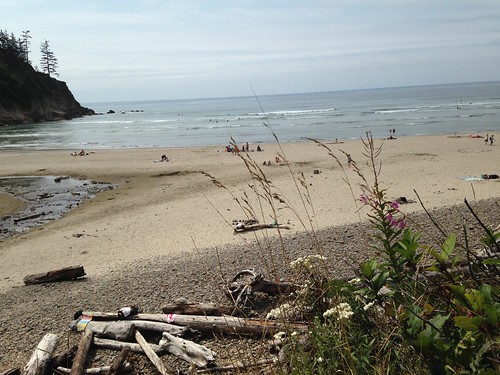Summer is officially here, and it brought with it a scorching heat wave that has invoked record high temperatures throughout Oregon. Portland reached 116 degrees F this week, which is hotter than Dallas, New Orleans, or downtown Los Angeles have ever been according to NBC News. The Oregon coast, however, has not been experiencing this heat wave. The high each day in Newport has been a typical 63 degrees F, about 50 degrees cooler than the valley. These cooler coastal temperatures are perfect for field work, which is exactly what our summer interns are doing right now.
Earlier this month I spent a week in Newport getting to know our three summer interns. Two of them are Oregon Sea Grant Summer Scholars while one is a Doris Duke Conservation Scholar who has also been adopted by the Summer Scholars Program. You can read more about their personal experiences with fieldwork and living in Newport elsewhere in this blog forum.
It was wonderful to be working in person again rather than through choppy Zoom/Skype calls. The days flew by as we hastily prepared for summer field sampling including disseminating background information, creating codebooks, designing the sample plan, visiting sample sites, etc. It is such a privilege to work with college interns because they have a contagious enthusiasm and eagerness to learn and do the work.
It was also important to me to reconnect with the marine reserves which I am researching. Driving around to the different sampling sites with the interns allowed me to visit Cascade Head Marine Reserve, Otter Rock Marine Reserve, and Cape Perpetua Marine Reserve. The bright blue sky reflected off the ocean making it appear more blue than I remember it being. The birds were chirping, sea lions were barking, people were out surfing and walking their dogs on the beach. Sitting behind a computer looking at data all day can make you forget the bigger picture, but visiting the coast was the perfect way to remember.
Of course, I still found time to recreate in the evening, though the wind did nearly blow me away a couple times. I was lucky enough to be staying at a house just a couple blocks from the beach. The dog and I made it down to the beach every day, sometimes even twice.

